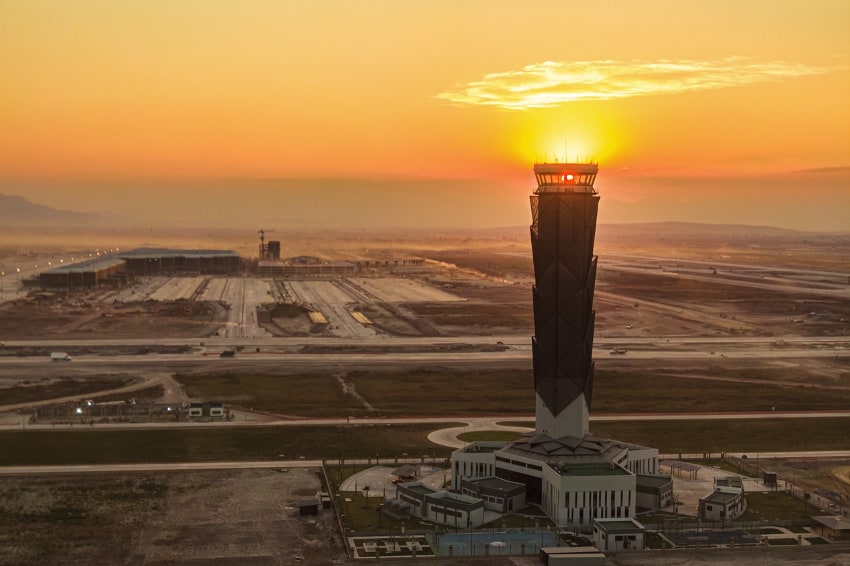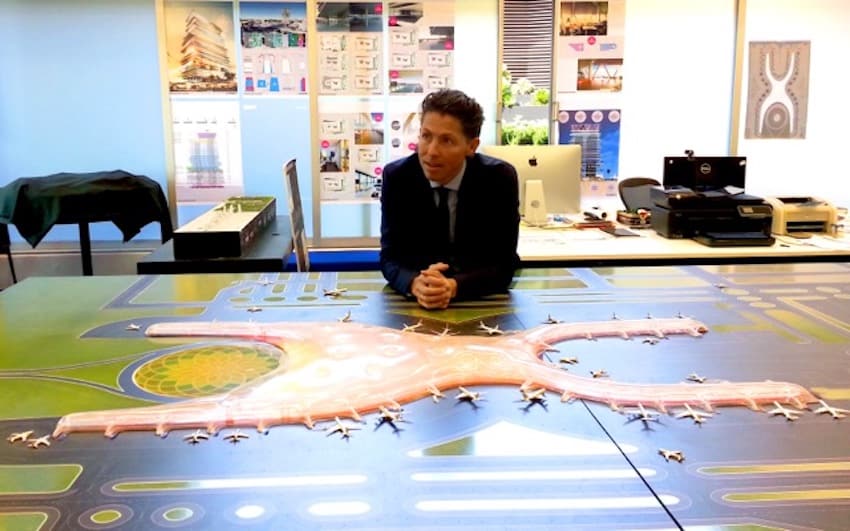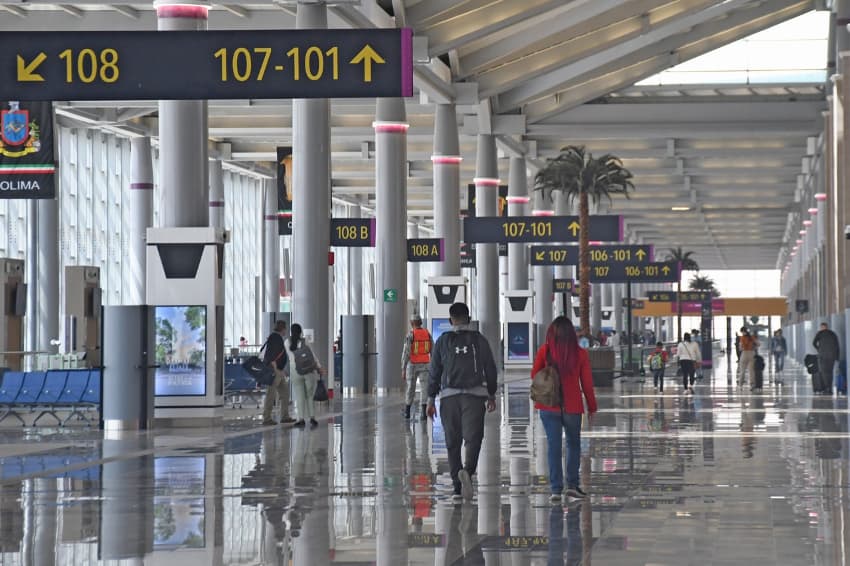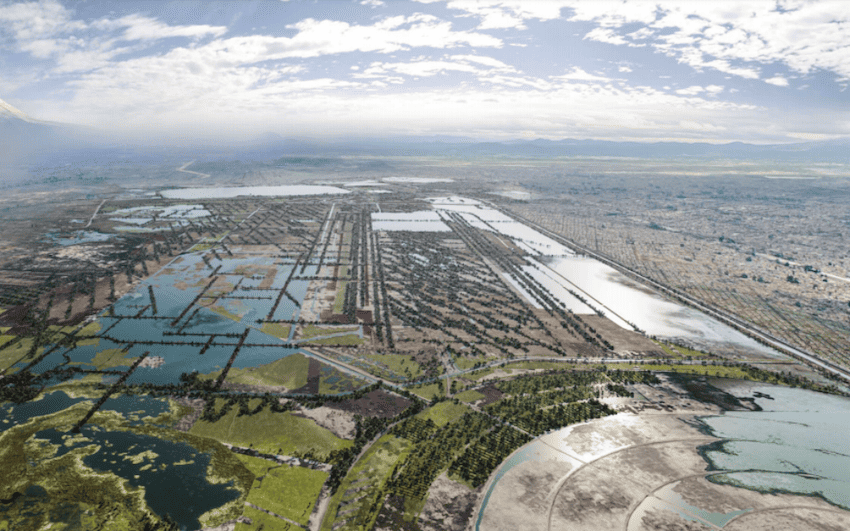Could the new Mexico City International Airport (NAICM), which was partially built by the previous government and canceled by President Andrés Manuel López Obrador, be completed?
Presidential candidate Xóchitl Gálvez believes so, although she stressed on Thursday that she hasn’t yet decided whether a government she leads would seek to reactivate the multi-billion-dollar project.
Claudia Sheinbaum, the ruling Morena party’s presidential candidate and clear favorite to win the June 2 election, ridiculed the idea first aired by Gálvez last week, asserting that any move to resume construction of NAICM would be an “ecological absurdity.”
The construction of an airport on an ancient lakebed in Texcoco east of Mexico City was the signature infrastructure project of former president Enrique Peña Nieto.
López Obrador canceled the project — at significant expense — after a legally-questionable referendum held before he took office in December 2018. He had long argued that the project was corrupt, too expensive and being built on land that was sinking.
His government instead converted an Air Force base north of Mexico City into the Felipe Ángeles International Airport (AIFA), which opened in March 2022. Passenger numbers have gradually increased at AIFA, but the new airport still hasn’t eased pressure in any significant way on the Mexico City International Airport (AICM), which, according to the federal government, reached saturation point two years ago.

Meanwhile, an ecological park on the site of what was to be NAICM is slated to open at the end of April.
What has Gálvez said about the abandoned airport project?
The candidate for a three-party opposition alliance and Sheinbaum’s main rival for the presidency said late last week that if she wins the June 2 election she will consider reviving the NAICM project with 100% private investment, as public money is needed for things such as medicines and schools.
“I believe there could be honest, transparent private participation [in the project]. I don’t know why the [current] government thinks that working with the private sector means corruption,” Gálvez said at a Citibanamex event on March 7.
She said that the cancellation of the airport is “an issue that continues to pain us” and that she was “studying” the possibility of reactivating the project.
“I don’t want to take a decision lightly. Three hundred billion pesos [US $18 billion] was already spent [on the airport]” Gálvez said, adding that the money was effectively “thrown in the trash.”
As president, the former senator said she would also consider the option of expanding the army-built AIFA, as the current government anticipated would occur in future years in order to increase capacity from the current level of 20 million passengers per year to as many as 80 million.

“We’ll have to see if six runways fit [at AIFA], we’ll have to see if new terminals fit because it has to be an airport for at least 100 million passengers,” Gálvez said.
Responding to Sheinbaum’s criticism, the PAN-PRI-PRD candidate said Thursday that it is “false that I’ve made a decision” about the NAICM project.
“We’re studying [the issue] because, among other things, Texcoco Lake could be a water storage lake. … We have to study the issue comprehensively,” Gálvez said.
Water supply in Mexico City, and many other parts of the country, is a major concern.
Sheinbaum declares that completing NAICM is out of the question
On the campaign trail in Cuernavaca on Tuesday, the former Mexico City mayor and close ally of López Obrador asserted that there is no possibility of reviving the canceled airport project and that any attempt to do so would be an “ecological absurdity.”
Speaking at an event with scientists from the Autonomous University of the State of Morelos, Sheinbaum noted that the NAICM site has already been declared a Natural Protected Area and asserted that her rival’s idea had not been well thought out.
“The lakes [on the site] have recovered to a large extent, and diversity has returned to the area in a significant way [since the airport was canceled] and this was achieved through science,” she said.
Sheinbaum acknowledged that the “connectivity” between Mexico City and AIFA needs to improve to encourage more people to use the new airport, and suggested a government she leads would look at additional ways to do that.

A rail link between the Buenavista suburban train station in central Mexico City and AIFA — located about 40 kilometers north of the capital’s central square — is scheduled to open in June.
Reviving NAICM project not economically viable, academic says
Salvador Rosas Barrera, an academic in the postgraduate economics program at the National Autonomous University, told the infrastructure news website Obras por Expansión that completing the airport is not an economically viable option, although Gálvez said the money would have to come from the private sector.
“What is the problem? That we would have spent [billions] on the cancellation of the airport [just] to build it again,” he said.
In early 2022, the Federal Auditor’s Office estimated that the cost of canceling the NAICM project was 184.55 billion pesos (US $11 billion at today’s exchange rate).
Gálvez didn’t mention any estimated cost for completing the project, but the figure would presumably be in the billions of dollars.
Rosas said that NAICM would have offered significant “advantages” to Mexico, particularly as a result of its slated size. It was expected to eventually have a capacity to handle 125 million passengers annually.
“It was going to compete with the large airports in Europe,” Rosas said.
Othón Pérez, infrastructure director at construction company Bovis, told Obras por Expansión that it wouldn’t be an easy task to “recover” the structures that were built on the NAICM site and continue the project.

What is needed, he said, is to invest in the existing Mexico City airport and build new roads to AIFA.
Considering that Sheinbaum is the hot favorite to become Mexico’s next president, that the NAICM site is now a Natural Protected Area and that a new airport opened in the Mexico City metropolitan area just two years ago, it appears extremely unlikely that planes will one day take off and land in Texcoco.
While Gálvez’s idea to have the private sector complete NAICM may never become a reality, the opposition presidential candidate has succeeded in reigniting a debate about the cancellation of the previous government’s airport project, and what needs to be done in Mexico to ensure that the country’s future aviation needs are met.
With reports from El Economista, Infobae, Proceso, Aristegui Noticias and Obras por Expansión
